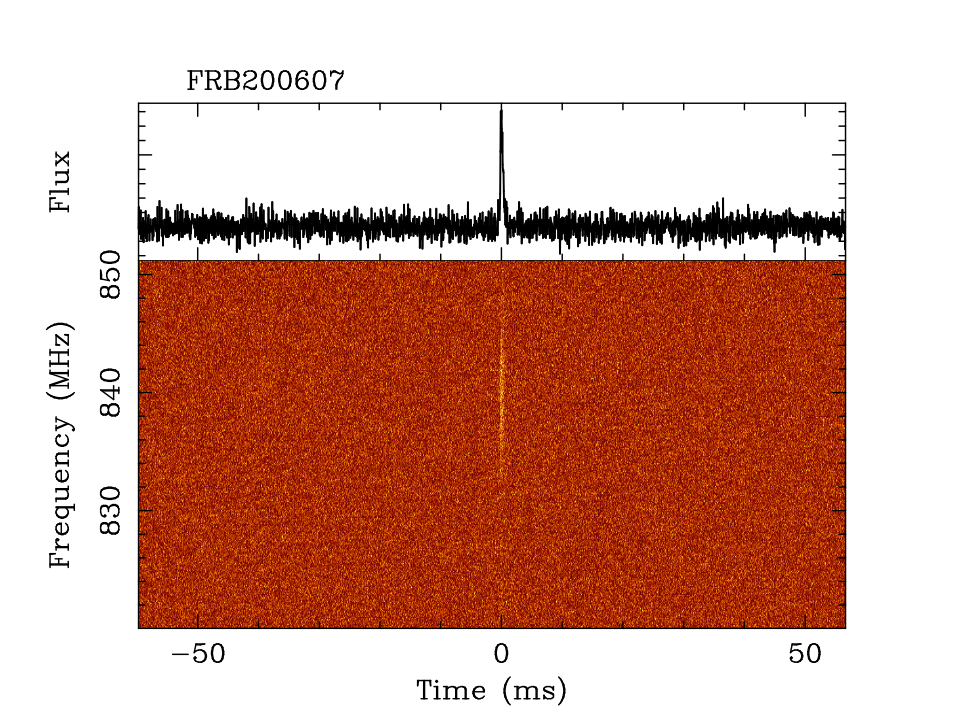At UTC 2020-06-07-10:37:21.7 (2020-06-07.442612269), we found a bright fast radio burst as part of the ongoing search program (UTMOST), at the Molonglo telescope.
Molonglo is a 1.6 km long East-West array (Bailes et al 2017, PASA, 34, 45) and was operating in drift-scan mode with pointing centred on the meridian at the time of detection. Source localisation is excellent in Right Ascension (5 arcsec at 1-sigma) but poor in Declination (~1.2 deg at 1-sigma) (see Caleb et al 2017 MNRAS 468, 3746).

FRB200607 was found during a blind FRB search programme in real-time using an automated GPU-accelerated/machine learning based pipeline and the raw voltages were recorded for offline processing.
The optimal dispersion measure (DM) that maximizes the signal-to-noise ratio is: 466.9 pc cm^-3. The DM estimate of NE2001 model is ~30 pc cm^-3, and YMW16 model is ~25 pc cm^-3 at this position, resulting in an intergalactic excess of ~439 pc cm^-3. The upper limit on the DM-inferred redshift is thus z ~ 0.40.
An early estimate (lower limit) of the event’s apparent fluence is ~ 51 Jy ms (corrected for attenuation of the primary beam in the RA direction, but not in the Dec direction), width ~ 1.3 ms, with a detection signal-to-noise ratio = 41.
The most likely position is RA = 13:41:30.65, DEC = -05:08:24.1, J2000, Galactic: 325.4 deg, Gb = 55.5 deg. The 95% confidence localisation arc is as follows: (RA, DEC) in (hours, deg)
A formula describing the localisation arc is:
RA = 13.691826 + 1.106710e-04*(DEC + 5.204167) + 7.531360e-06*(DEC + 5.204167)**2
13.691603 -7.608750
13.691628 -7.288139
13.691653 -6.967528
13.691681 -6.646917
13.691711 -6.326306
13.691742 -6.005694
13.691775 -5.685083
13.691808 -5.364472
13.691844 -5.043861
13.691881 -4.723250
13.691919 -4.402639
13.691958 -4.082028
13.692000 -3.761417
13.692044 -3.440806
13.692089 -3.120194
13.692136 -2.799583
where RA is in hours, Dec is in deg, and is valid in the Dec range [-7.6,-2.8]

Follow-up observations of the FRB are encouraged.